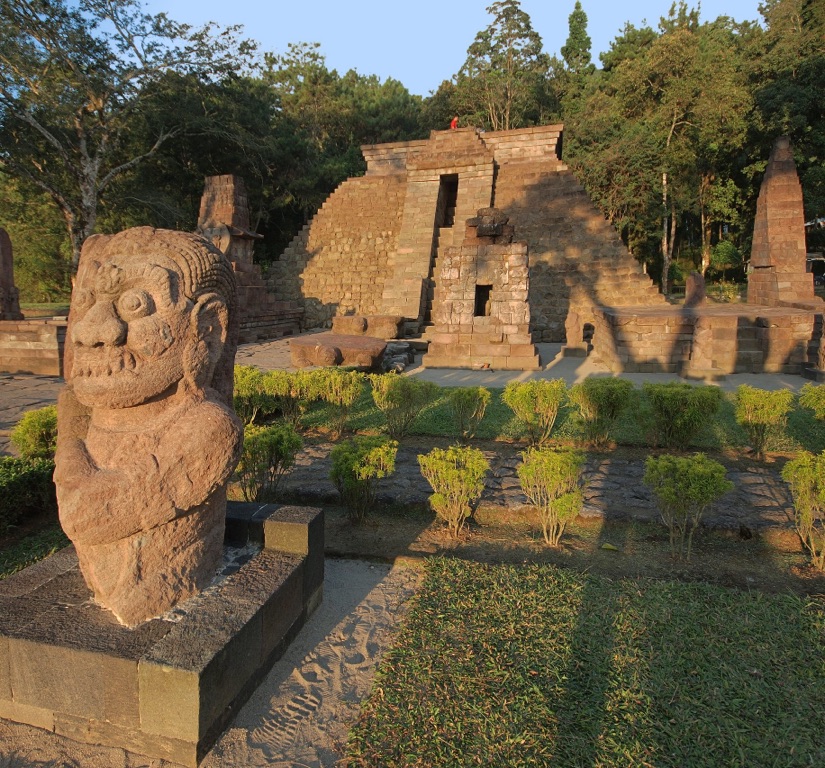Summary
Introduction to Candi Sukuh
Step into the enigmatic realms of Candi Sukuh, a unique Hindu temple situated on the slopes of Mount Lawu in Central Java, Indonesia. This fascinating monument stands out for its pyramidal structure, reminiscent of ancient Latin American architecture. Unlike the typical sharp spires of Javanese temples, Candi Sukuh’s truncated form and unmistakable themes of life and fertility offer a glimpse into a distinctive blend of Indonesian and ancient animist beliefs. Visitors are greeted by a series of reliefs and statues that depict various symbols and rituals, possibly linked to pre-Hinduism practices, making it a treasured asset for cultural aficionados and historians alike.
Get your dose of History via Email
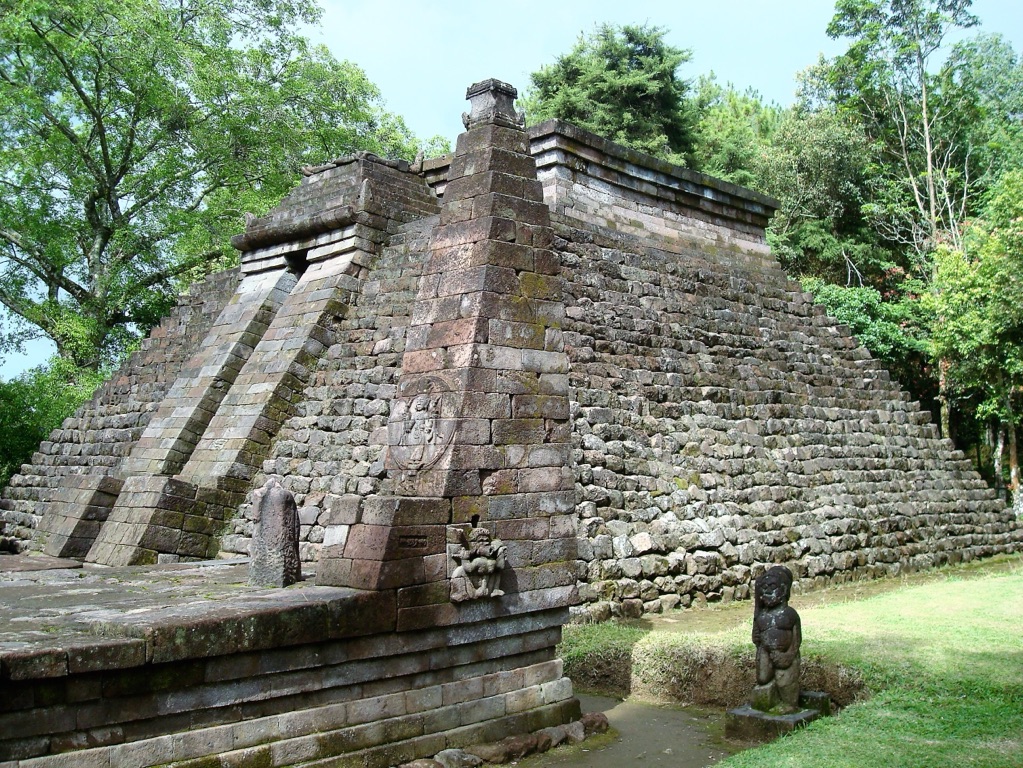
Architectural Significance
Candi Sukuh’s peculiar design stirs curiosity and amazement. The terraced temple, with its flat-topped pyramid, provides a departure from the standard Hindu temple silhouette, prompting many to draw parallels to the Mayan pyramids. Constructed in the 15th century, it presents an unadorned, almost austere charm, using volcanic rock that has withstood time’s test. The main structure, consisting of three terraces leading to a pinnacle platform, symbolizes the cosmological ascent from the worldly to the divine. This spiritual journey through stone is accentuated by the temple’s intricate carvings and statues that capture narratives from Hindu mythology, local folklore, and universal themes of creation and immortality.
Cultural and Historical Insights
Delving deeper into Candi Sukuh, one discovers its historical significance amidst Indonesia’s transition from ancient animism to Hindu-Buddhist influence. The vivid reliefs and explicit imagery found here are not mere artistic expressions but act as a narrative portal to the era’s spiritual and societal conditions. It is a bearer of the last vestiges of indigenous Javanese religion before Islam took root in the region. The site’s remote location hints at a sanctuary for esoteric practices, perhaps serving as a focal point for the last Hindu king of Majapahit’s followers. With each visit, Candi Sukuh promises a unique confrontation with the past, offering invaluable insight into Java’s opulent history and the evolution of its religious landscape.
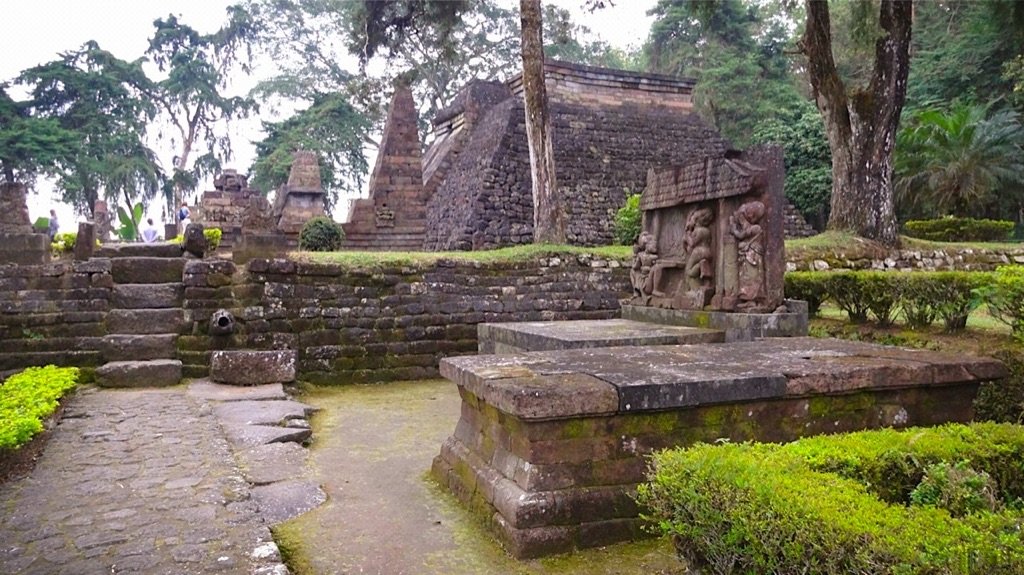
Historical Background of Candi Sukuh Pyramid
The Origins of Candi Sukuh
Located on Java’s mystical Mount Lawu lies the Candi Sukuh Pyramid, steeped in a storied past. This 15th-century Hindu temple, remarkable for its pyramidal shape, was built during the declining years of the Majapahit Empire. Unlike its Javanese contemporaries, Candi Sukuh flaunts a megalithic design that resembles the ancient pyramids of Mesoamerica more than typical Hindu architecture. Its existence reflects a complex fusion of Hindu traditions with indigenous animist beliefs, which were prominent before the arrival of Hinduism.
Symbolism in Stone
The temple’s terraces ascend just as spirituality does, making the metaphysical tangible. Every carved stone at Candi Sukuh narrates a tale of life, fertility, and the afterlife, urging us to reflect on the cycle of existence. The site’s striking figures and reliefs exude a deep connection with the earth, fertility rites, and cosmological values. Additionally, the temple uniquely features explicit depictions of human birth, unlike other more conservative Hindu sites, showcasing the Java culture’s openness to discussing and portraying life’s genesis.
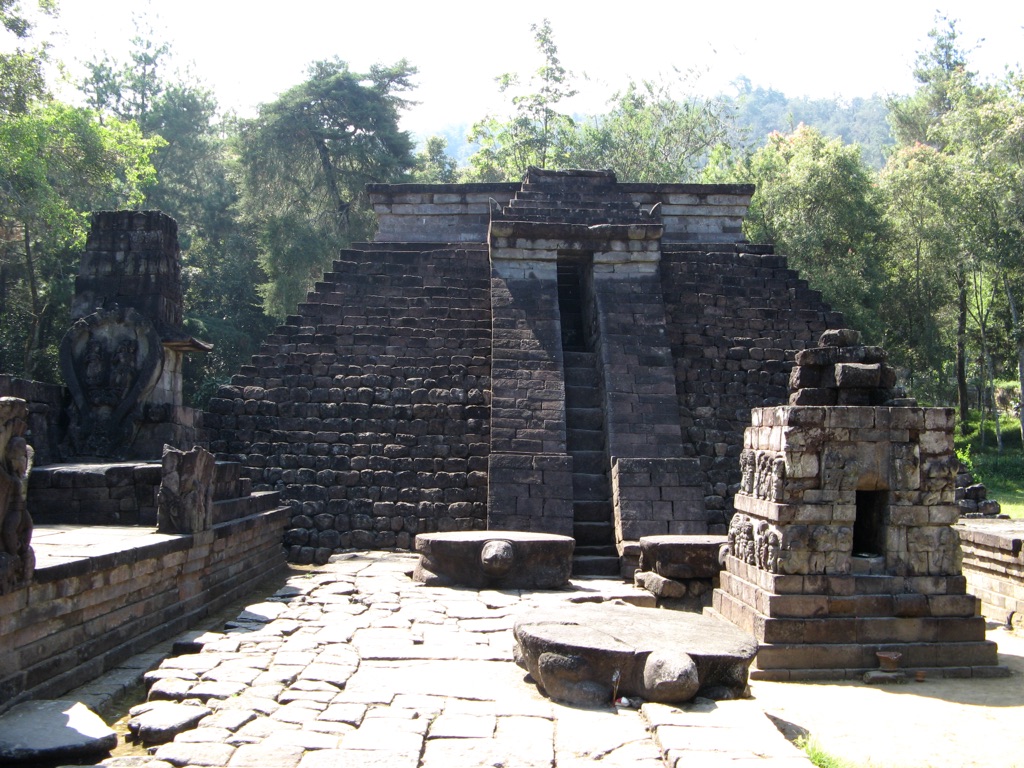
Candi Sukuh’s Cultural Tapestry
Candi Sukuh’s historical fabric is woven with the threads of spirituality, politics, and culture. It emerged as a bastion of Hinduism against the rise of Islam in Java, serving as a spiritual refuge for Hindu adherents. However, the temple’s iconography also indicates a syncretistic approach, where pre-Hindu traditions persisted amidst the larger Hindu framework. This indicates a cultural crossroads that captures the complexity and diversity of Javanese belief systems during a time of religious transition.
Fascinatingly, the pyramid’s location is not random. It stands at nearly 900 meters above sea level on the lush slopes of Mount Lawu, a strategic place esteemed by locals for its spiritual significance. The site’s elevation situates it closer to the heavens, aligning with the ancient belief that mountains bridge the human and divine realms.
Today, Candi Sukuh continues to be an enigma. It draws scholars, historians, and tourists alike who seek to unravel the mysteries of its origin and function. As a repository of Javanese culture’s final Hindu expressions, the temple provides invaluable insights into a civilization at the cusp of a major religious shift.
The Discovery of Candi Sukuh Pyramid
Initial Encounter with the Pyramid
In the lush landscape of Central Java, the Candi Sukuh Pyramid remained a concealed gem until its modern rediscovery. This ancient structure, steeped in mysticism, was first documented by Western scholars in the 19th century. It was Sir Thomas Stamford Raffles, the British Governor of Java, who brought the temple to the world’s attention during his tenure on the island. His fascination with Javanese culture led to significant contributions to the documentation of the island’s historical sites, including Candi Sukuh.
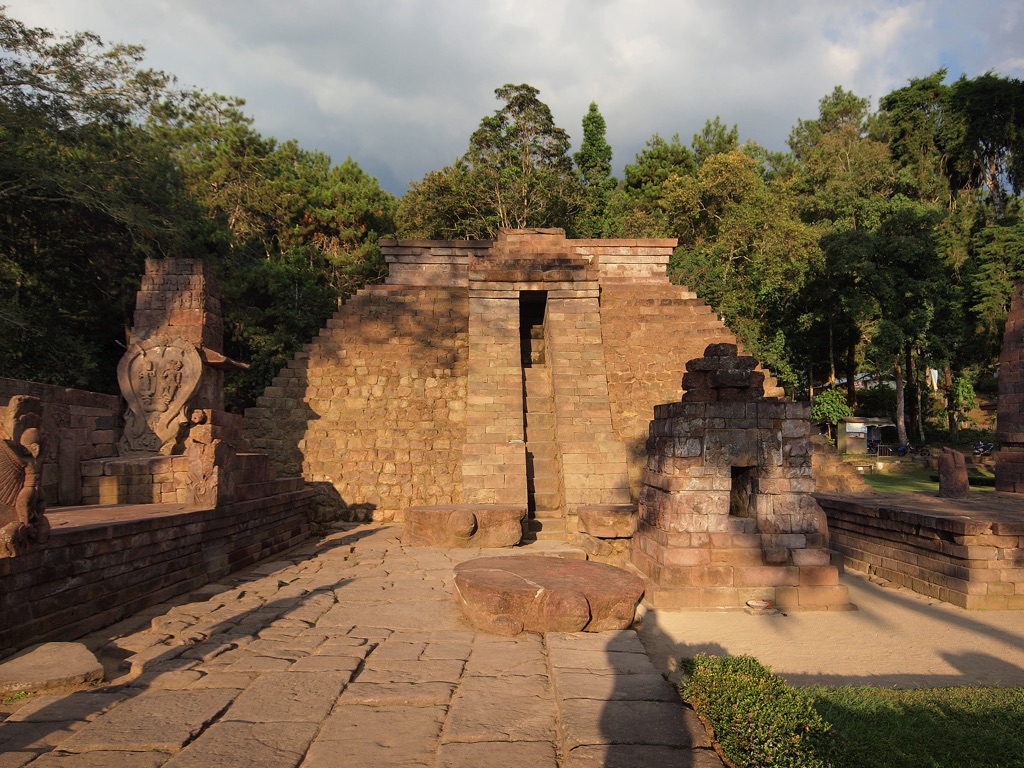
Documenting the Mystical Structure
The rediscovery prompted early explorers and archaeologists to delve into the history of Candi Sukuh. Notably, experts like W.F. Stutterheim and N.J. Krom pondered over the temple’s intricate stone carvings and cultural significance. Their studies shone a light on its unique architecture and iconography, quite distinct from other Javanese temples. The findings have since laid the groundwork for understanding the pyramid’s place in Southeast Asian history.
Candi Sukuh’s Later Recognition
After its initial rediscovery, Candi Sukuh became a focal point for subsequent research and restoration efforts. The temple had suffered from neglect and the ravages of time, but the interest it sparked led to conservation measures. Indonesian archaeologists undertook restoration projects in the early 20th century, aiming to preserve Candi Sukuh’s legacy. They also strove to gain a deeper understanding of its construction and the culture from which it emerged.
Yet, despite these efforts, many mysteries of Candi Sukuh remain unsolved. Its lack of extensive written records or inscriptions leaves historians piecing together a cultural puzzle. The pyramid stands as a physical narrative, with gaps waiting to be filled by future discoveries.
Today, Candi Sukuh has emerged as a significant historical attraction, bringing visitors from around the globe. Its blend of animistic traditions and Hindu symbolism offers a fascinating glimpse into Indonesia’s pre-Islamic era. As a testament to Java’s rich past, the Candi Sukuh pyramid remains an enduring enigma—inspiring ongoing exploration and study.
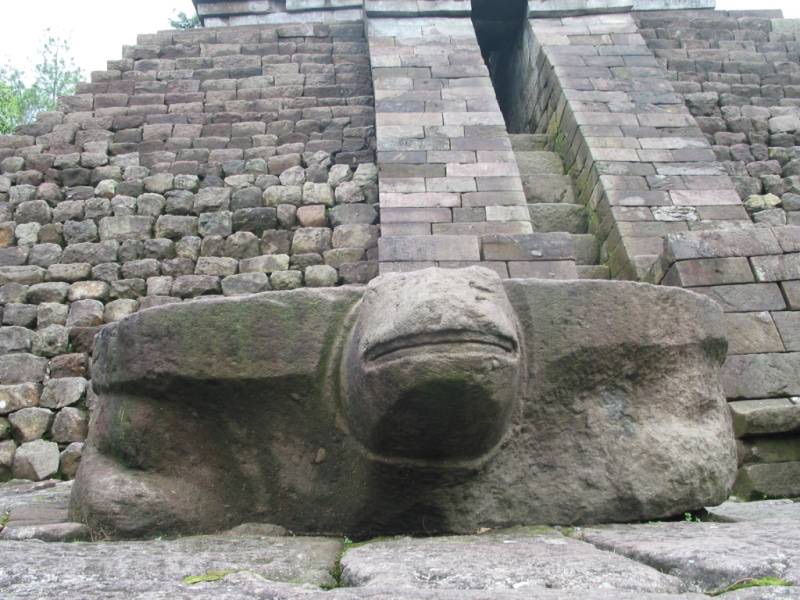
Cultural Significance, Dating methods, Theories and Interpretations
Unraveling Candi Sukuh’s Timeline
Deciphering the age of Candi Sukuh has been a complex process. Experts have estimated its construction to the 15th century, during the twilight of the Majapahit Empire. The dating methods largely rely on stylistic analysis of its carvings and comparisons with other known historical timelines. Radiocarbon dating of organic materials and the temple’s stratigraphy further corroborate the era of its establishment. This convergence of dating techniques serves to piece together the timeline of this intriguing site.
Revealing the Cultural Essence
Candi Sukuh holds a special place in Javanese culture. It encapsulates a period of religious and cultural amalgamation. As one of the last-standing Hindu temples before Islam’s ascendancy in Java, it embodies a transitional phase. Its iconography and design reflect a blend of Hindu mythology with indigenous animistic traditions. Their co-existence within the temple’s walls tells a story of cultural adaptation and continuity against the backdrop of changing religious landscapes.
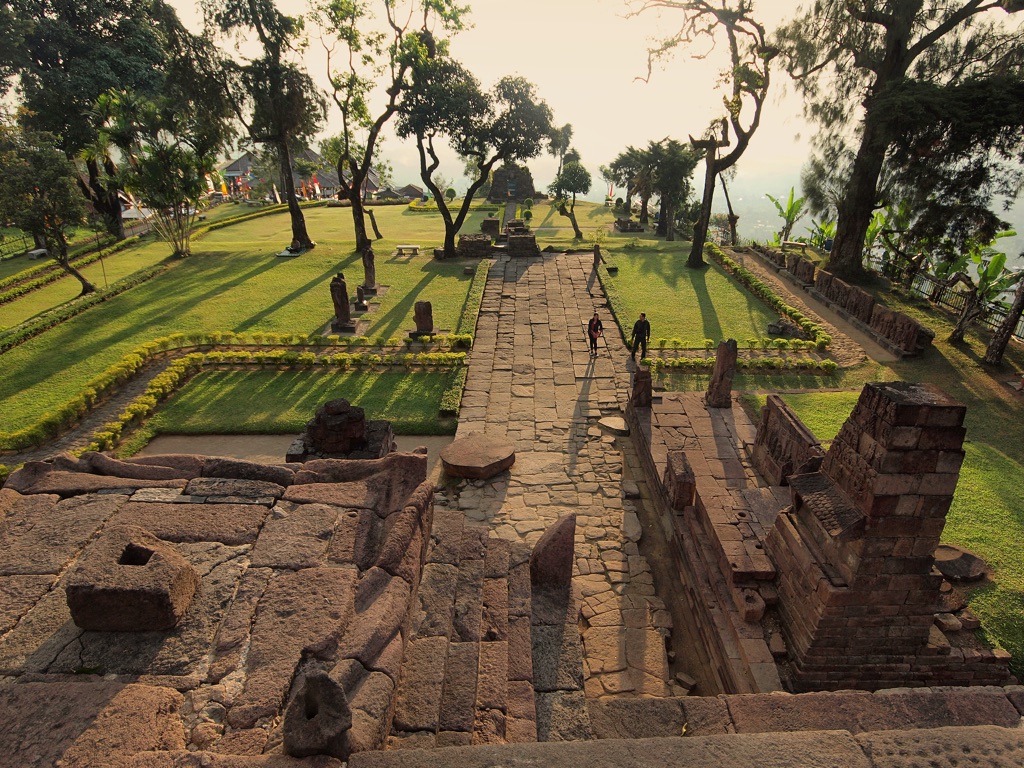
Theories Behind the Pyramid’s Purpose
Several theories attempt to explain the enigmatic presence of Candi Sukuh. Some suggest it was a site for purification rituals before death, aligned with the belief in Mount Lawu as a stairway to the heavens. Others theorize it may have been a royal burial ground, given its pyramid shape and the discovery of stone lingga, commonly associated with the worship of Shiva. The lack of definitive historical records has given rise to much speculation, inviting scholars and visitors to interpret its past.
Candi Sukuh’s design also fuels debate. Its pyramid shape is unique among Indonesian temples, leading some to propose influences from other ancient civilizations. Yet, no concrete evidence links Candi Sukuh to cultures beyond the Indonesian archipelago. It remains a captivating subject for comparative studies in architecture and cultural diffusion.
The interpretations of Candi Sukuh’s bas-reliefs and statues have significantly evolved as well. Once thought to be solely focused on fertility and procreation, current insights suggest they might also represent the journey of the soul and the complexities of human morality. The site endures as a symbol of Java’s multifaceted heritage, challenging and enriching our understanding with each layer unearthed.
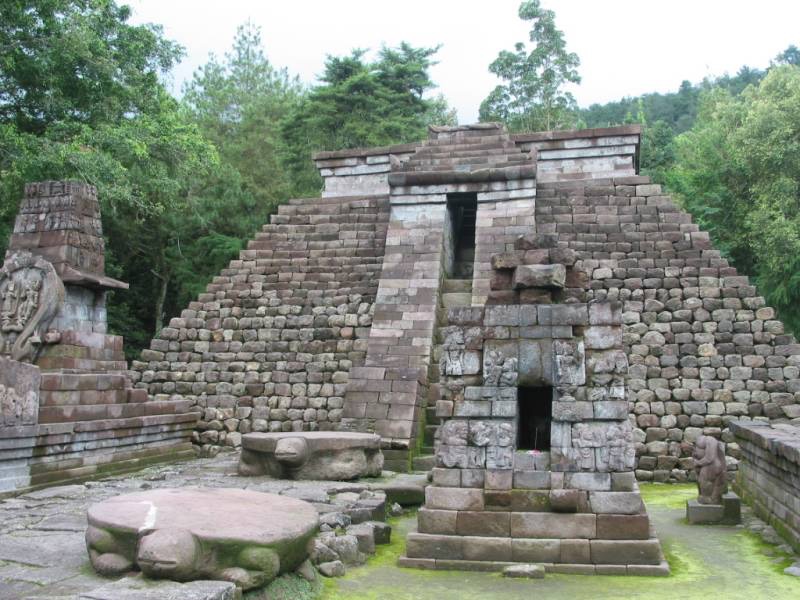
Conclusion and Sources
The enigmatic Candi Sukuh Pyramid remains a monumental testament to Indonesia’s rich cultural and religious history. Its unique architectural style and symbolic carvings continue to provoke awe and scholarly debate, providing a window into the civilization that once thrived on the slopes of Mount Lawu. The melding of Hindu and indigenous influences at Candi Sukuh offers invaluable insight into the cultural transitions of pre-Islamic Java. While the true purpose of the pyramid and the full extent of its significance may never be fully unraveled, the aura of mystery that surrounds Candi Sukuh only adds to its allure and importance as a historical site.
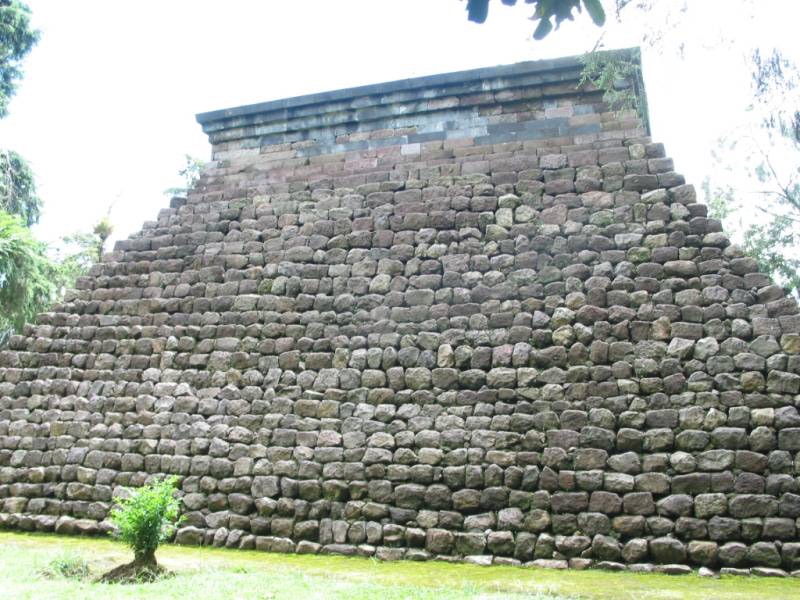
For further reading and to validate the information presented in this article, the following sources are recommended:
Or you can check any of these reputable archaeological and historical texts:
Schoppert, P., Damais, S., 1997. Java Style, Paris: Didier Millet, pp. 192-198.
Jordaan, R., 1999. Candi Sukuh and the Tantu Panggelaran. Bijdragen tot de Taal-, Land- en Volkenkunde, 155(3), pp. 438-470.
Miksic, J., 1997. Java’s Candi Sukuh and Candi Ceto: Traces of Javanese Practices of Power in the Fifteenth Century. Indonesia and the Malay World, 25(71), pp. 1-36.
Kieven, L., 2005. Following the Capricorn: Architectural and Symbolical Elements at Candi Sukuh, Central Java. International Journal of Javanese Studies, 1, pp. 1-24.
Soekmono, R., 1974. The Javanese Candi: Function and Meaning. Studies in Southeast Asian Art, New York: Cornell University Press, pp. 58-76.

